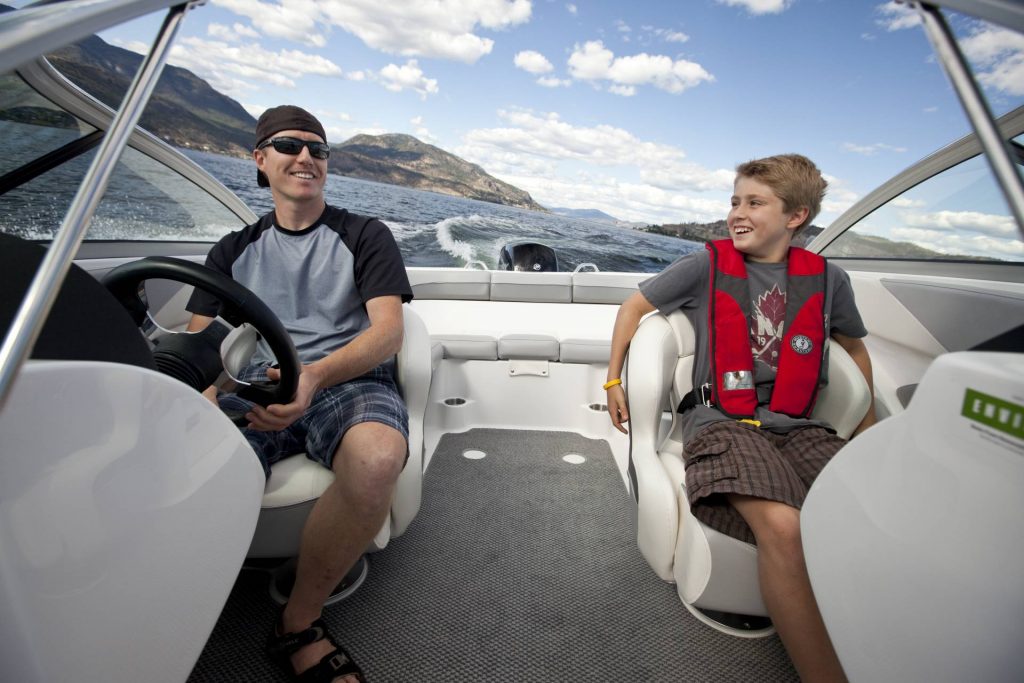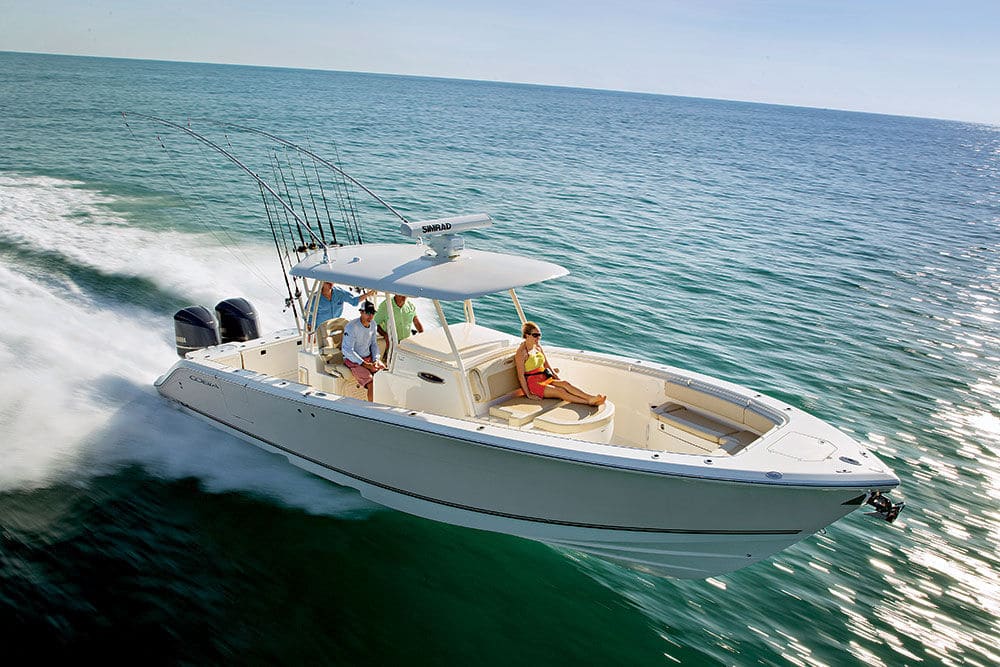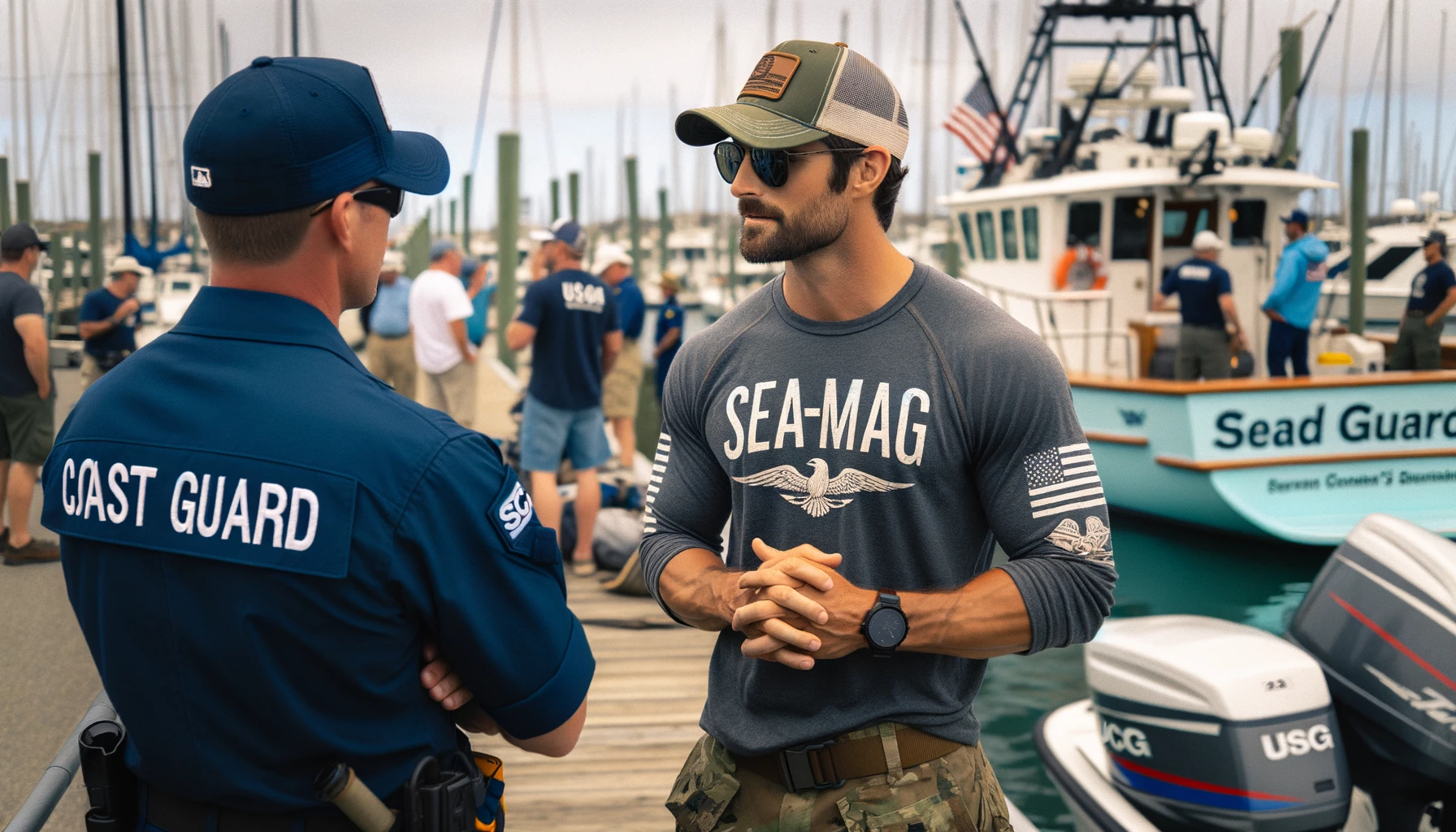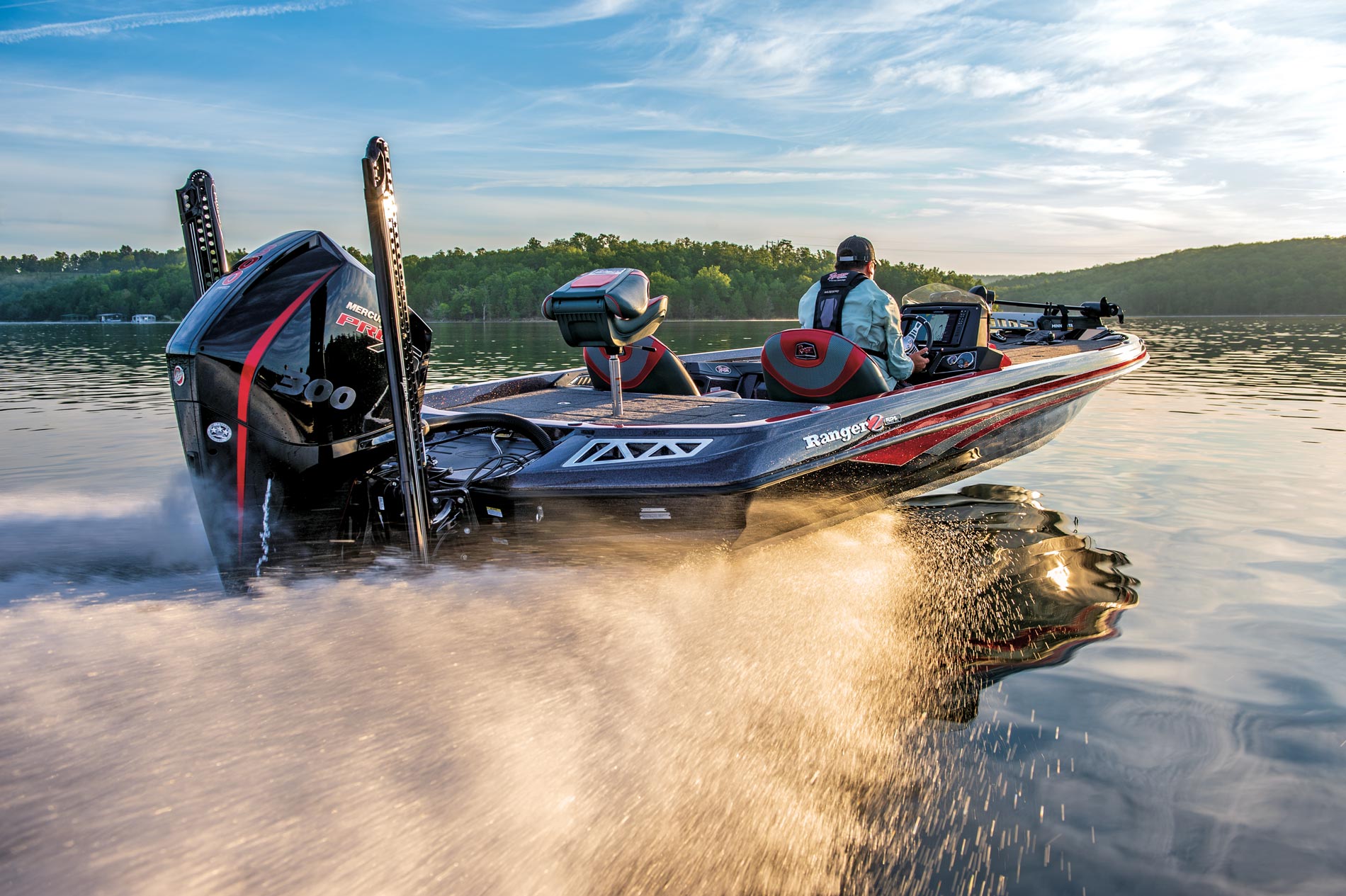Boating License: Essential Tips and Requirements for Success
Boating can be a fun and exhilarating hobby, allowing people to explore the open water and soak in the beautiful scenery. However, it's essential for boaters to obtain a boating license to ensure they operate their vessels safely and responsibly.

Boating licenses not only equip boaters with vital knowledge about navigational rules, but also educate them on essential safety measures and environmental considerations.
In most states, getting a boating license involves completing a boater education program, which can be done either online or in person.
These courses cover essential topics such as boating safety, boat operation, and navigation, as well as regional requirements and regulations.
By obtaining a boating license, individuals demonstrate their commitment to being responsible boaters and preserving the environment, contributing to a safer and more enjoyable experience for everyone on the water.

Key Takeaways
- Boating licenses are essential for responsible and safe boat operation.
- Boater education courses cover navigation, safety measures, and regional regulations.
- Obtaining a license ensures compliance with local laws and environmental considerations.
Understanding Boating Licenses
The Importance of a Boating License
A boating license ensures that operators of boats and other watercraft are knowledgeable about safety rules and regulations. In the United States, boating licenses are regulated by each state, and many states have specific requirements for boating education that are approved by the National Association of State Boating Law Administrators (NASBLA).
Successfully completing a boater safety course not only grants an individual a license, but also makes them a more responsible and informed boater.
Boating License Age Requirements
Age requirements for obtaining a boating license vary by state.
For example, in California, anyone 16 or older needs a California Boater Card to operate a motorized boat with 15 horsepower or more.
There are exceptions for 12- to 15-year-olds if they're supervised by a person at least 18 years old with a California Boater Card. It is essential to verify the specific age requirements for your state, as they can differ.
Types of Boating Licenses
There are various types of boating licenses, depending on the type and size of the boat or personal watercraft being operated.
Most states offer a general boating license that covers motorboats and personal watercraft. However, some states have specific licenses for different vessel types and sizes.
In addition, there may be certain endorsements or certifications required to operate specific boats, such as sailboats or large motor yachts. These may be obtained through separate courses or by completing a different level of boater safety education.
To obtain a boating license, one must complete a state-approved boating safety exam offered by various providers.
The length of the test and specific content may differ by state. Once the course is completed, the results are provided, and successful candidates receive their boating license.
Remember, each state has its own rules and regulations regarding boating licenses, so it is crucial to familiarize yourself with the requirements in your area.
Boater Education Programs
Choosing the Right Boater Education Course
Boater education courses are essential for individuals interested in learning how to operate boats safely and responsibly.
When selecting a course, it is important to choose one that is state-approved and recognized by the relevant authorities.
Boat Ed is one such platform that offers boating license safety courses in conjunction with boating safety agencies in over 40 states and Canada.
These courses have been developed to meet the requirements set by the responsible agencies, ensuring that participants receive comprehensive and up-to-date information.
Benefits of NASBLA-Approved Courses
Courses that are approved by the National Association of State Boating Law Administrators (NASBLA) ensure a high level of education and adherence to boating safety standards.
These NASBLA-approved courses are recognized by the U.S. Coast Guard and offer important benefits such as:
- Standardized curriculum covering essential topics like navigation, docking, and emergency preparedness
- Interactive content, including videos, quizzes, and simulations, to facilitate learning
- Certification that is recognized across multiple states, making it easier for boaters to confidently navigate different waters
State-Specific Boater Education
While NASBLA-approved courses provide a solid foundation in boating safety, it is crucial to undergo state-specific boater education.
Different states may have varying rules and regulations regarding boating and watercraft operation, making it necessary for boaters to familiarize themselves with the specific requirements of their state.
The BoatUS Foundation, for example, offers free online boating safety courses tailored for individual states.
Successful completion of these courses earns participants their required boater education certificate, ensuring that they can navigate safely and in compliance with state laws.
Boating Safety and Regulations
Understanding Boating Laws
Boating laws and regulations vary by state, and it is essential for boaters to familiarize themselves with these requirements.
Laws can dictate who can operate a boat, what type of safety equipment needs to be on board, and what guidelines must be followed for safe boat operation.
In some states, a boating safety certificate is required for certain age groups or specific types of boats, such as those powered by engines with greater than 10 horsepower.
In addition to state-level requirements, there are also federal regulations enforced by the U.S. Coast Guard that apply to all boaters nationwide.
These laws can address items such as navigation rules, vessel registration, and proper use of navigational lights.
Complying with these regulations helps ensure safety and reduces the risk of accidents on the water.
Boating Safety Course Overview
A boating safety course is an educational program designed to teach boaters about safe boat operation, navigation, and accident prevention.
These courses are typically required for obtaining a boating license or safety certificate. They can be offered by state agencies, the U.S. Coast Guard Auxiliary, or private boating organizations.
Upon completion, participants may receive a certificate or card as proof of their boating safety education.
Courses cover a wide range of topics, including:
- Basic boat handling and operation
- Navigation rules and procedures
- Emergency preparedness and response
- Environmental stewardship
Some courses may also offer hands-on training, allowing participants the opportunity to practice their skills on the water under the guidance of an instructor.
Regulatory Agencies and Compliance
Regulatory agencies play a crucial role in maintaining safety on our nation's waterways.
The U.S. Coast Guard is a primary regulatory agency responsible for enforcing federal boating laws and ensuring compliance with safety regulations.
They also provide support to state boating agencies and partner with the [National Association of State Boating Law Administrators (NASBLA)] to develop uniform boating laws and national boating education programs.
State-level agencies, such as the Department of Natural Resources or the Fish and Game Commission, also have a role in implementing and enforcing boating laws within their respective states.
They may be responsible for issuing boating licenses and safety certificates, conducting boat inspections, and providing boating education programs.
Boat Operation and Navigation
Operating Different Watercraft
Boats come in various types and sizes, each with its specific methods of operation.
The three main types of watercraft are motorboats, personal watercraft (PWC), and sailboats.
- Motorboats are the most common type of watercraft and vary in both size and power. They can be used for leisure cruising or engaging in water sports like fishing and skiing.
- Personal watercraft (PWC) are smaller, more agile, and typically only seat one or two passengers. They offer an exhilarating experience on the water but require different skills and safety precautions1.
- Sailboats rely on wind power and involve more complex operation due to their sailing rigging and navigational systems. Learning how to sail takes time and practice but offers a serene and eco-friendly experience on the water.
Rules of the Waterways
As a boater, understanding and following the rules of the waterways is crucial to ensure everyone's safety.
Some of these rules involve a proper understanding of the navigation light system, right-of-way, and channel markers.
Navigational lights must be used from sunset to sunrise to signal your boat's position and direction2. Different lighting configurations are utilized for various types of boats like motorboats, sailboats, and personal watercraft.
Understanding who has the right-of-way in various scenarios prevents collisions and congestion on the waterways. For instance, motorized vessels should give way to non-powered vessels like sailboats3.
Lastly, boaters should be familiar with channel markers and buoys that indicate safe passage, water depths, and potential hazards4.
Responsible Boat Operation
Operating a boat responsibly not only promotes safety but also helps protect our waterways and preserve the environment.
Some key aspects of responsible boat operation include:
- Regular boat maintenance: Ensure your boat is in good working condition by performing regular inspections and maintenance.
- Avoiding alcohol and drugs: Refrain from consuming alcohol or drugs that could impair your ability to operate the boat safely.
- Keeping a proper lookout: Always stay alert and aware of your surroundings, including other boats, obstacles, and water conditions.
- Being prepared for emergencies: Familiarize yourself with emergency procedures, like using a VHF radio to call for assistance, and ensure your boat is equipped with necessary safety gear5.
- Weather awareness: Check the weather forecast before heading out and pay close attention to signs of changing conditions while on the water.
Online Boating License Process
Navigating Online Course Options
There are numerous options available for individuals seeking an online boating license program.
Many of these programs are offered by organizations such as Boat-Ed and BoaterExam, both of which provide online courses recognized by boating safety agencies in multiple states.
Before beginning a course, make sure to research the boater education requirements in your state and ensure that the selected course is approved.
Completing the Online Boating Safety Course
The process of obtaining an online boating license typically involves completing a comprehensive boating safety course.
These courses will cover important topics, such as:
- Safe boat operation
- Navigation and right of way rules
- Emergency procedures
- Boating laws and regulations
Upon registering for a course, individuals will have access to various learning materials, including video lectures, interactive quizzes, and written content.
The duration of the course varies, but most students can complete it within a few hours or days, depending on their pace.
After studying the materials, participants will take a final exam to test their knowledge.
Obtaining the Boater Education Card
Once the final exam is successfully passed, individuals can apply for their boater education card or boating license.
This card is proof that they have completed an approved online boating safety course and achieved the requisite passing score on the exam.
Some states may require additional steps, such as submitting an application or paying an issuance fee.
In most cases, the boater education card can be printed from home or received by mail after completing the course. It is important to carry this card while operating a boat as proof of meeting the state's boater education requirements.
Certification and Licensing
Earning a Boating Safety Certificate
Earning a boating safety certificate is an essential step in becoming a responsible boater.
To obtain this certificate, individuals must complete an approved boater safety course. These courses are developed in partnership with the U.S. Coast Guard Auxiliary and boating safety agencies in Canada and more than 40 states.
The courses can be taken online or in-person, depending on the state or province's requirements.
Once the course is successfully completed, the individual will receive their boating safety certificate, which is necessary to apply for a boat license.
Boat Registration and Insurance
Upon completion of the boater safety course, individuals must register their boat with the appropriate state or provincial agency.
Registration requirements may vary, so it is essential to check the specific rules for your location.
Some states may also require boat owners to have insurance that covers property damage and personal injury in case of accidents on the water.
Renewing and Updating License Information
Boaters must be aware of the renewal and updating process for their boating license.
Boat licenses must be renewed periodically, typically every few years. Additionally, if there is a change in personal information, such as a change of address or name, the boat license must be updated accordingly.
To renew or update your boat license, contact your local boating authority.
Recreational Boating Considerations
Choosing Appropriate Boating Gear
When planning a recreational boating trip, it's crucial to select the right gear for your vessel.
The type of gear you'll need depends on the size of your boat, its intended use, and the water environment you'll be navigating.
For example, a pleasure craft operator card is typically required for operating motorized boats, while smaller, non-motorized boats may not need any specific certifications.
Some essential boating equipment includes life jackets, navigation lights, sound-signaling devices, and an emergency kit.
It's also essential to have an anchor, lines, and fenders on board.
Investing in quality gear ensures not only your safety but also a more enjoyable experience on the water.
Understanding Reciprocity Between States
One crucial aspect of boating is understanding the concept of reciprocity.
Reciprocity allows boaters with valid boating education certifications from one state to operate a recreational vessel in another state, usually for a limited period.
It's essential to review the specific boating regulations within the state you plan to boat, as some states may have additional requirements or restrictions.
Be prepared to provide your boating certification if approached by authorities on the water.
Safety Tips for Different Water Environments
Different water environments, such as lakes, rivers, and oceans, will pose unique challenges and require specific safety considerations.
Here are some general tips by environment:
- Lakes: Check weather reports and be aware of wind conditions, which can influence waves. When anchoring, ensure your anchor line is long enough to reach the lakebed and hold your boat securely.
- Rivers: Rivers can have strong currents and hidden obstructions. Maintain a safe speed and keep a sharp lookout to avoid collisions. It's also essential to understand the local navigation rules, as they may differ from those on lakes or oceans.
- Oceans and coastal areas: These environments can be more unpredictable, so make sure your vessel and gear are in excellent condition. Pay close attention to the tide and current conditions, as well as any nearby shipping channels or restricted areas.
Regardless of the water environment you're in, always wear a life jacket, and make sure your boat is equipped with the necessary safety equipment, including a working radio for emergency communication.
Advanced Boating Courses
Specialized Courses for Sailboats and Powerboats
Advanced boating courses are designed for those who want to expand their knowledge and gain confidence in handling various types of watercraft.
These courses cater to both sailboats and powerboats, focusing on their unique handling and maneuvering characteristics.
Besides, they delve deeper into technical aspects such as the engine, electrical systems, and maintenance procedures.
- Sailboats: Advanced courses for sailboats will explore topics like sail trimming, spinnaker handling, reefing techniques, and advanced steering methods. These courses are designed to build the sailor's confidence in dealing with challenging conditions and optimizing the sailboat's performance.
- Powerboats: For powerboat enthusiasts, advanced courses will cover topics like docking and maneuvering in tight spaces, towing, anchoring techniques, and advanced navigation. These courses are geared towards making powerboat operators feel comfortable and confident in various situations.
Navigation and Weather Predictions
Another essential aspect of advanced boating courses is teaching navigation and weather prediction skills.
These courses cover navigation elements like reading charts, plotting courses, and electronic navigation tools.
Such courses are vital for sailors and powerboaters alike who want to ensure accurate navigation and safe voyages.
Navigation:
Various organizations, such as America's Boating Club, offer comprehensive advanced navigation courses.
These courses cover topics like piloting, celestial navigation, GPS usage, and chart interpretation.
Mastering these skills will enhance a boater's ability to navigate confidently and safely on the water.
Weather Predictions:
Being able to predict and understand weather conditions is crucial for any boater.
Advanced courses in weather prediction will cover reading weather forecasts, understanding atmospheric phenomena, and interpreting satellite images.
By acquiring these skills, boaters can better plan their trips and be prepared for any change in weather conditions.
Regional Boating License Requirements
Specifics for Coastal vs. Inland Waters
Boating license requirements can vary depending on whether you are operating in coastal waters or inland waters.
In coastal states like California, boating licenses are often required for specific types of watercraft, such as those with engines exceeding a certain horsepower or length.
Additionally, the experience of boating in ocean waters can be significantly different from that of inland waterways, which may influence the type of training or education required for obtaining a license.
Inland states, such as Oklahoma, may have less stringent licensing requirements, and may focus more on safety, age limits, and the operation of specific watercraft, such as personal watercraft (PWCs) or motorized boats.
It is essential to understand the requirements for the specific area in which you plan to operate your vessel, and to comply with all relevant regulations.
State and Territory Licensing Differences
State requirements for obtaining a boating license vary significantly across the US.
Some states may require all boaters to have a license, while others may only require a license for certain watercraft or age groups.
For example, in California, boaters aged 16 or older who operate a motorized vessel on state waterways are required to carry a California Boater Card.
On the other hand, Oklahoma requires all boaters who operate motorized boats or PWCs on state waters to complete a state-approved boating safety course and to carry a valid photo ID at all times while boating.
However, certain boat operators, such as non-residents who have successfully completed a National Association of State Boating Law Administrators (NASBLA)-approved boating safety course, may be exempt from this requirement.
Boating and the Environment
Environmental Responsibility While Boating
Boating can be a fun and enjoyable activity, but it is essential for all boaters to be aware of the environmental impact their activities have on the water and surrounding wildlife.
Both motorized and non-motorized vessels can impact the environment, so it's important to be conscious of your actions and follow best practices to minimize your ecological footprint.
- Motorized vessels: These boats are powered by engines and can create significant environmental issues, such as pollution, disturbance of marine life, and damage to vegetation. To minimize these issues:
- Maintain your engine regularly, ensuring it is clean, well-tuned, and operating efficiently.
- Use environmentally-friendly fuels, lubricants, and cleaning products.
- Avoid high speeds in shallow waters where the engine's propellers can harm plants and wildlife.
- Non-motorized vessels: While sailing or paddling has less environmental impact, there are still steps you can take to minimize your footprint:
- Stay in designated areas and avoid disturbing sensitive habitats like seagrass beds and coral reefs.
- Pick up and properly dispose of any waste or trash you encounter on the water.
Wildlife Preservation and Boating Laws
In addition to considering the environmental impacts of boating, it is essential to be aware of wildlife conservation and boating laws in place to protect natural resources and habitats.
Various regulations are designed to protect the ecosystem, such as wildlife protection laws, speed limits, no-wake zones, and vessel exclusion zones.
- Wildlife protection laws: These laws are in place to safeguard native species from harm by boaters and ensure that natural habitats are preserved. For example, in some areas, it is illegal to harass or disturb marine mammals like whales, dolphins, or seals. Familiarize yourself with applicable local, state, and federal wildlife protection regulations and always follow them while boating.
- Speed limits and no-wake zones: In areas where there is sensitive wildlife or nesting birds, speed limits and no-wake zones are often in place to minimize disturbances. Always adhere to posted speed limits and be aware of your vessel's speed and wakes in these areas.
Frequently Asked Questions
What are the requirements to obtain a boating license in California?
To obtain a boating license in California, individuals are required to pass a boating safety course approved by the California State Parks Division of Boating and Waterways (DBW).
After successful completion of the course, they will receive a California Boater Card, which serves as a license to operate a vessel in the state.
At what age can one apply for a boating license in California?
In California, a person must be at least 16 years old to apply for a boating license.
However, there are certain age-based restrictions for operating specific types of watercraft.
It is the responsibility of the boat owner to know the age requirements for their particular vessel.
What is the cost to acquire a boating license in the state of California?
The cost for a California Boater Card is $10.
This fee covers the issuance of a permanent boating safety certificate and is separate from any fees associated with taking the boating safety course.
Is completing a boaters safety course mandatory to get licensed in California?
Yes, completing a boaters safety course is mandatory to obtain a boating license in California.
The course covers boating laws, navigation, and safety procedures. Upon successful completion of the course, individuals will receive their California Boater Card.
How long does it typically take to complete a boating education course in California?
The duration of a boating education course varies depending on the provider and format of the course.
On average, it takes around 3-5 hours to complete. Most programs offer online courses, allowing participants to complete the course at their own pace.
Do residents of California need a boating license to operate a vessel?
Yes, California residents need a boating license to operate a vessel in the state's waters. The California Boater Card is required for all motorized boat operators regardless of age. It certifies that the holder has successfully completed a boating safety course in accordance with California state law.
Charlie is Editor-in-Chief of Sea Magazine






